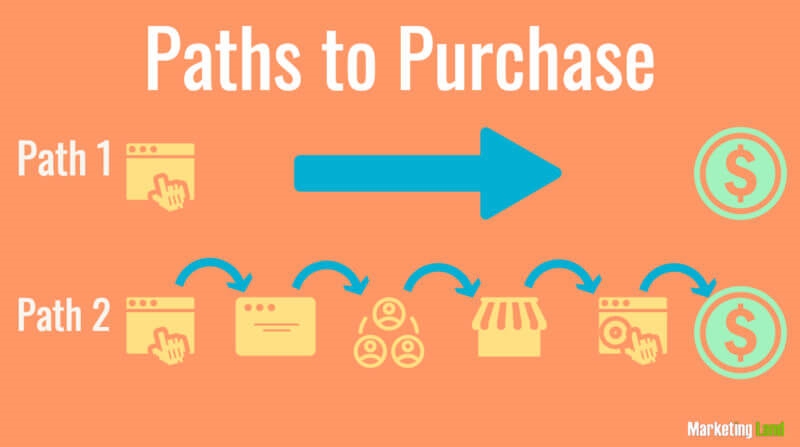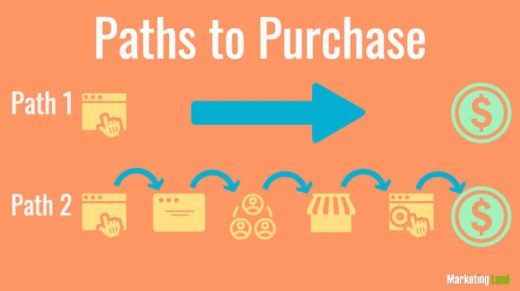What is attribution modeling?
Everything you need to know about attribution, including its benefits and limitations.

Understanding the steps a customer takes before converting can be just as valuable to marketers as the sale itself. Attribution models are used to assign credit to touchpoints in the customer journey.
For example, if a consumer bought an item after clicking on an display ad, it’s easy enough to credit that entire sale to that one display ad. But what if a consumer took a more complicated route to purchase? She might have initially clicked on the company’s display, then clicked on a social ad a week later, downloaded the company app, then visited the website from an organic search listing and and converted in-store using a coupon in the mobile app. These days, that’s a relatively simple path to conversion.
Attribution aims to help marketers get a better picture of when and how various marketing channels play contribute to conversion events. That information can then be used to inform future budget allocations.
Attribution models
Following are several of the most common attribution models.
- Last-click attribution. With this model, all the credit goes to the customer’s last touchpoint before converting. This one-touch model doesn’t take into consideration any other engagements the user may with the company’s marketing efforts leading up to that last engagement.
- First-click attribution. The other one-touch model, first-click attribution, gives 100 percent of the credit to the first action the customer took on their conversion journey. It ignores any subsequent engagements the customer may have had with other marketing efforts before converting.
- Linear attribution. This multi-touch attribution model gives equal credit to each touchpoint along the user’s path.
- Time decay attribution. This model gives the touchpoints that occured closer to the time of the conversion more credit than touchpoints further back in time. The closer in time to the event, the more credit a touchpoint receives.
- U-shaped attribution. The first and last engagement get the most credit and the rest is assigned equally to the touchpoints that occured in between. In Google Analytics, the first and last engagements are each given 40 percent of the credit and the other 20 percent is distributed equally across the middle interactions.
Algorithmic, or data-driven attribution. When attribution is handled algorithmically, there is no pre-determined set of rules for assigning credits as there is with each of the models listed above. It uses machine learning to analyze each touchpoint and create an attribution model based on that data. Vendors don’t typically share what their algorithms take into consideration when modeling and weighting touchpoints, which means the results can vary by provider. Google’s data-driven attribution is just one example of algorithmic attribution modeling.
Custom attribution. As the name suggests, with a custom option, you can create your own attribution model that uses your own set of rules for assigning credit to touchpoints on the conversion path.
Benefits, limitations of attribution
So is that it? Pick a model and be done? Not quite.
Marketers face the ongoing challenge of being able to stitch all the various touchpoints available to their customers together for a grand view of attribution. There have been improvements, with greater ability to incorporate mobile usage, in-store visits and telephone calls into models, but perfection is elusive.
“Given the increasing fragmentation of platforms and the types of media that marketers have available to them, attribution has never been more important from a marketing measurement perspective,” says Simon Poulton, senior director of digital intelligence at digital marketing agency Wpromote. “Unfortunately, the nature of attribution is one where the goal posts are constantly being moved and just like an asymptote, we’ll never be able to reach the point of 100 percent attribution.”
Chris Mechanic, CEO and co-founder of digital agency Webmechanix, agreed. “Any attribution model is going to be messy,” Mechanic said. “Find one that makes some degree of sense and stick with it. Whether it’s first touch, last touch or blended, the really important thing is getting everybody [on a team] to buy into it and then stick with that over time.”
As marketers invest in more channels and digital mediums, getting a unified view of a customer’s journey is only getting harder. “This will become ever more complicated by increased investments in influencer marketing and Amazon where there are significant challenges in creating unified IDs,” Poulton said. “While many of the major players like Visual IQ and Neustar look to solve for some of these challenges via partnerships, we will still be faced with larger challenges on the horizon for out-of-home (OOH) media as one example.”
“In addition to the customer journey tracking that (Google’s and Facebook’s attribution platforms) provide, we’ll likely see the development of variance analysis solutions within the platforms that will enable marketers to better understand the existing impact of their strategies,” Poulton said. “At an overarching level, the key takeaway here is the convergence of data across platforms and the ability to understand interactions that occur across channels in both an impression and click capacity.”
Marketing Land – Internet Marketing News, Strategies & Tips
(50)


